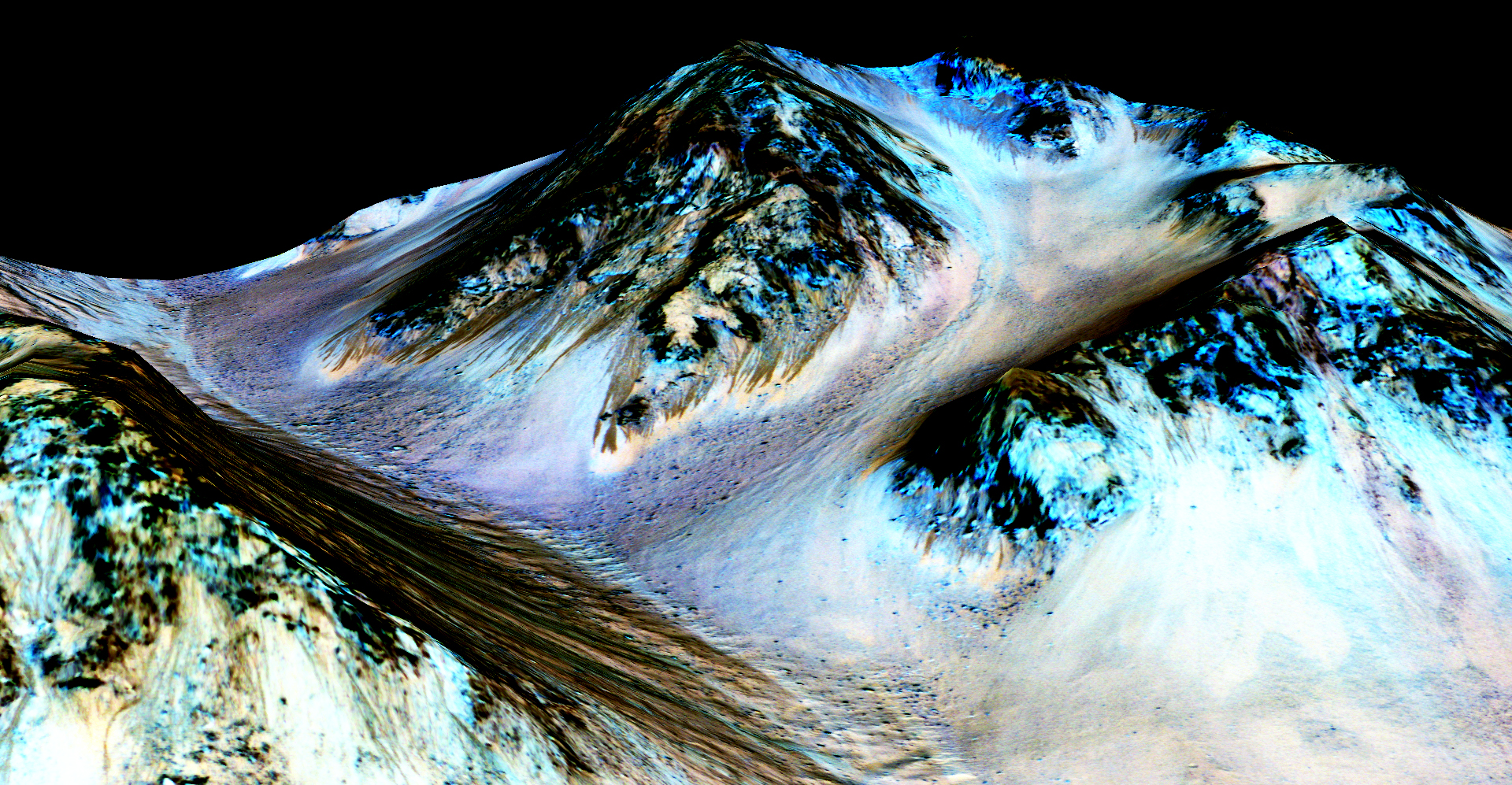by Sanne Tol
LAST year NASA celebrated its 10-year anniversary of Mars explora-tions by Mars rovers Spirit and Oppor-tunity, that were sent to Mars to search its surfaces for evidence of past water. This month NASA could report that there is not only evidence for past wa-ter, but also for present water. Humans haven been looking for this evidence for ages, as it is a first step to a possibly human inhabitable planet. Although the previous Mars missions conducted with rovers have covered an interesting decade, NASA announced that not the perature rises above minus 23 degrees Celsius, and seem to ebb away when the temperature drops. It was in these RSL where the hydrated minerals were found. These RSL have often been linked with the existence with water, but only now has there been actual ev-idence to confirm it is water, albeit sa-line.However, as Lujendra Ojha, now of the Georgia institute of Technolo-gy, says: “We found the hydrated salts only when the seasonal features were widest, which suggests that either the dark streaks themselves or a process that forms them is the source of the hydration. In either case, the detection of hydrated salts on these slopes means rovers, but their Mars Reconnaissance Orbiter (MRO) has finally provided evi-dence for liquid water flows on the red planet.
The MRO uses an imaging spec-trometer, a device to measure a certain area for a certain aspect – in this case minerals – that allowed the MRO to find hydrated minerals.
Mars has multiple places that show dark streaks on the surface, particularly on sloping surfaces. They were first noticed by then-undergraduate Lujendra Ojha, who used images of the MRO’s High Resolution Imaging Science Experiment (HiRISE). The dark streaks, now known as recurring slope lineae (RSL), appear to flow when temperature rises above minus 23 degrees Celsius, and seem to ebb away when the temperature drops. It was in these RSL where the hydrated minerals were found. These RSL have often been linked with the existence with water, but only now has there been actual ev-idence to confirm it is water, albeit sa-line.
However, as Lujendra Ojha, now of the Georgia institute of Technology, says: “We found the hydrated salts only when the seasonal features were widest, which suggests that either the dark streaks themselves or a process that forms them is the source of the hydration. In either case, the detection of hydrated salts on these slopes means that water plays a vital role in the for-mation of these streaks.” The hydrated salts were not found in smaller streaks.
Ojha and his co-authors describe the hydrated minerals as perchlorates, such magnesium perchlorate, and so-dium perchlorate, of which some have been shown to keep liquids from freez-ing in temperatures as cold as minus 70 degrees Celsius, way below the normal freezing point of water. On earth they are normally found in deserts compa-rable to the cold deserts of Mars. This is not the first time perchlorates were found on the red planet: Mars Rover Curiosity, which was sent up in 2012, has found some in the planet’s soil, but never before were they found hydrated.
The discovery evidently leads to the question of where the water is com-ing from. It could be oozing from the planet but the hypothesis the scientists favour is that the surface salts absorb water vapour out of the atmosphere.
Evidently, this new discovery leads back to the question of whether there was once life on Mars, and if life on the planet is possible now. There has been much evidence for water from the past, but not yet for any life forms. Mars’ en-vironment is not very favorable for life as we know it: it has little atmosphere to separate its surface from space, the temperatures vary considerably (dif-ferences can be greater than 100C), and has only 1/3 of the gravity of Earth. However, scientists now know there’s life possible in extreme conditions on earth (known as extremophiles, organ-ism that can live in extreme conditions such as volcanoes), so why not in the hostile environment of Mars?
The fact that a water flow has been found is quite encouraging.
Sanne Tol, Class of 2016, is a Science major from Halsteren, Netherlands.

